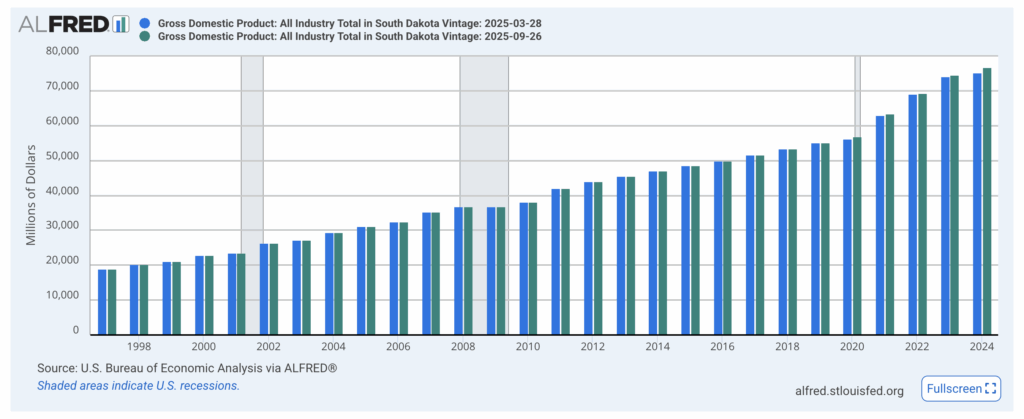Oklahoma data centers spark concerns over resource strain, job promises – KOKH

Report on Data Center Expansion in Oklahoma and Alignment with Sustainable Development Goals
Executive Summary
An interim study initiated by State Representative Amanda Clinton is examining the rapid expansion of the data center industry in Oklahoma, where 36 facilities are currently operational, under construction, or planned. The study addresses significant concerns regarding the industry’s alignment with key Sustainable Development Goals (SDGs), focusing on resource consumption, socio-economic impacts, and governance. The primary objective is to develop state-level policy that ensures this industrial growth contributes positively to sustainable development rather than undermining it.
Resource Management and Environmental Sustainability
The intensive resource consumption of data centers presents direct challenges to several SDGs. The study highlights critical areas of concern:
- SDG 6: Clean Water and Sanitation: Data centers require massive volumes of water for cooling, potentially straining local water supplies and jeopardizing water security for communities. This consumption conflicts with the goal of ensuring the availability and sustainable management of water for all.
- SDG 7: Affordable and Clean Energy: The significant electricity demand from these facilities places a heavy burden on local power grids. This can impact energy affordability and reliability for residents and runs counter to the objective of ensuring access to affordable, reliable, and sustainable energy.
- SDG 13: Climate Action: Unless powered by renewable sources, the high energy consumption of data centers will increase greenhouse gas emissions, hindering progress on climate action initiatives.
Socio-Economic Implications
The long-term socio-economic contributions of data centers are under scrutiny, particularly in relation to their impact on local communities and economies.
- SDG 8: Decent Work and Economic Growth: The study cautions that economic impact analyses are currently unreliable and that job creation figures promised by the industry are often overstated. A thorough assessment is required to determine if these facilities provide sustained, inclusive economic growth and decent work opportunities.
- SDG 11: Sustainable Cities and Communities: The strain on local utilities can lead to increased costs for residents, impacting the inclusivity and sustainability of communities. Furthermore, public debate, such as that in Coweta over a proposed facility near residential areas, underscores the need for careful urban and regional planning to avoid negative impacts on community well-being.
Governance and Policy Recommendations
A primary finding of the study is the lack of state-level oversight, with facility location decisions being made almost exclusively at the local level. This points to a need for a stronger institutional framework to guide development.
- SDG 16: Peace, Justice and Strong Institutions: The current governance gap highlights the need for effective, accountable, and transparent institutions. The interim study is a crucial first step toward creating state policies that prevent unintended consequences and ensure that industrial development is managed responsibly.
- SDG 17: Partnerships for the Goals: Moving forward requires a multi-stakeholder approach, fostering partnerships between state and local governments, private industry, and communities to ensure that data center development aligns with Oklahoma’s long-term sustainability objectives.
Public Perception and Community Engagement
Public opinion regarding the data center expansion is divided, reflecting the complex trade-offs between economic development and environmental and social sustainability.
- Proponents: Cite potential benefits such as job creation and an expanded local tax base, aligning with traditional economic growth models.
- Opponents: Express concerns over the strain on public resources (water and electricity) and the appropriateness of locating large industrial facilities near residential neighborhoods, prioritizing community well-being and environmental protection.
Analysis of Sustainable Development Goals in the Article
1. Which SDGs are addressed or connected to the issues highlighted in the article?
-
SDG 6: Clean Water and Sanitation
The article directly connects to this goal by highlighting the “massive consumption of… water” by data centers, which raises concerns about straining local utilities and the sustainability of water resources in Oklahoma.
-
SDG 7: Affordable and Clean Energy
This goal is relevant due to the article’s focus on the “massive consumption of electricity” by the data center industry. This high demand can strain the energy grid and potentially increase costs for residents, touching upon the affordability and sustainability of energy.
-
SDG 8: Decent Work and Economic Growth
The article addresses this SDG by discussing the economic aspects of data center development, including the promise of “jobs, and taxable property use.” However, it also cautions that the “job creation promised by these projects is often overstated” and that a “reliable” economic impact study is lacking.
-
SDG 9: Industry, Innovation, and Infrastructure
This goal is central to the article, which discusses the rapid growth of the data center industry and its infrastructure. The concerns about resource consumption and lack of oversight question the sustainability and resilience of this industrial development.
-
SDG 11: Sustainable Cities and Communities
The article relates to this goal by examining the impact of data centers on local communities. Issues such as the strain on local utilities, potential cost increases for residents, and the location of facilities “bordering nice neighborhoods” are all aspects of sustainable urban and community planning.
-
SDG 16: Peace, Justice, and Strong Institutions
This goal is connected through the discussion of governance and policy. The article notes that decisions are “primarily made at the local level, with minimal state oversight.” The interim study led by State Rep. Amanda Clinton is an effort to develop stronger institutions and guide “future state policy” for more effective and accountable management of this industry’s growth.
2. What specific targets under those SDGs can be identified based on the article’s content?
-
SDG 6: Clean Water and Sanitation
- Target 6.4: By 2030, substantially increase water-use efficiency across all sectors and ensure sustainable withdrawals and supply of freshwater to address water scarcity. The article’s concern over “massive consumption of water” directly relates to the need for water-use efficiency and sustainable withdrawals by the data center industry.
-
SDG 7: Affordable and Clean Energy
- Target 7.3: By 2030, double the global rate of improvement in energy efficiency. The “massive consumption of electricity” by data centers highlights the critical need for energy efficiency in this growing industry to avoid straining local utilities.
-
SDG 8: Decent Work and Economic Growth
- Target 8.2: Achieve higher levels of economic productivity through diversification, technological upgrading and innovation. The data center industry represents technological upgrading, but the article questions its true economic impact, suggesting a need to ensure it contributes effectively to productivity.
-
SDG 9: Industry, Innovation, and Infrastructure
- Target 9.4: By 2030, upgrade infrastructure and retrofit industries to make them sustainable, with an increased adoption of clean and environmentally sound technologies and industrial processes. The entire premise of the article revolves around the need to ensure the growing data center infrastructure is sustainable in terms of its resource consumption.
-
SDG 11: Sustainable Cities and Communities
- Target 11.3: By 2030, enhance inclusive and sustainable urbanization and capacity for participatory, integrated and sustainable human settlement planning and management. The article points to a lack of integrated planning (“minimal state oversight”) and highlights resident concerns, indicating a need for more sustainable and participatory planning processes for locating data centers.
-
SDG 16: Peace, Justice, and Strong Institutions
- Target 16.6: Develop effective, accountable and transparent institutions at all levels. The call for an interim study to “guide future state policy” and address the “minimal state oversight” is a direct effort to build more effective and accountable institutions to manage the data center industry’s impact.
3. Are there any indicators mentioned or implied in the article that can be used to measure progress towards the identified targets?
Yes, the article mentions or implies several indicators:
-
Water and Electricity Consumption Levels
The article repeatedly mentions the “massive consumption of electricity and water.” This implies that tracking the total volume of water and electricity used by data centers in the state would be a key indicator to measure progress towards water and energy efficiency (Targets 6.4 and 7.3).
-
Number of Jobs Created
The article discusses “job creation” as a promised benefit but notes it is “often overstated.” A direct indicator would be the actual number of full-time, long-term jobs created per data center, which would help measure the real economic impact (Target 8.2).
-
Economic Impact Data
The statement that “we don’t have an economic impact, really, that’s reliable” implies that a key indicator would be the development of reliable economic impact assessments. This could include metrics like tax revenue generated (“taxable property use”) and the overall contribution to the local GDP.
-
Utility Costs for Residents
The concern that data centers could be “increasing costs for residents” suggests that tracking changes in local electricity and water rates for residential customers in areas with new data centers would be a relevant indicator for measuring community impact (Target 11.3).
-
Development of State Policy and Oversight
The article highlights the “minimal state oversight” and the hope that the study will “guide future state policy.” An indicator of progress towards stronger institutions (Target 16.6) would be the successful development and implementation of state-level regulations or guidelines for the siting and operation of data centers.
4. Summary Table of SDGs, Targets, and Indicators
| SDGs | Targets | Indicators (Mentioned or Implied in Article) |
|---|---|---|
| SDG 6: Clean Water and Sanitation | 6.4: Increase water-use efficiency and ensure sustainable withdrawals. | Volume of water consumed by data centers. |
| SDG 7: Affordable and Clean Energy | 7.3: Double the rate of improvement in energy efficiency. | Volume of electricity consumed by data centers. |
| SDG 8: Decent Work and Economic Growth | 8.2: Achieve higher levels of economic productivity. | Number of jobs created; Amount of tax revenue generated; Reliable economic impact assessments. |
| SDG 9: Industry, Innovation, and Infrastructure | 9.4: Upgrade infrastructure and industries to make them sustainable. | Resource consumption levels (water, electricity) per unit of data processing/storage. |
| SDG 11: Sustainable Cities and Communities | 11.3: Enhance inclusive and sustainable urbanization and planning. | Changes in utility costs for residents; Proximity of data centers to residential areas. |
| SDG 16: Peace, Justice, and Strong Institutions | 16.6: Develop effective, accountable and transparent institutions. | Establishment of state-level policies and oversight mechanisms for data center development. |
Source: okcfox.com
What is Your Reaction?
 Like
0
Like
0
 Dislike
0
Dislike
0
 Love
0
Love
0
 Funny
0
Funny
0
 Angry
0
Angry
0
 Sad
0
Sad
0
 Wow
0
Wow
0
















































:focal(1500,1000)/https://media.globalcitizen.org/a6/9a/a69a4720-d8a1-4715-b596-18738d03c05c/rotary_polio_hero_image.jpg?#)







/countries/sri-lanka/photo-credit---dmc-sri-lanka.tmb-1200v.jpg?sfvrsn=dc298bcc_1#)



















